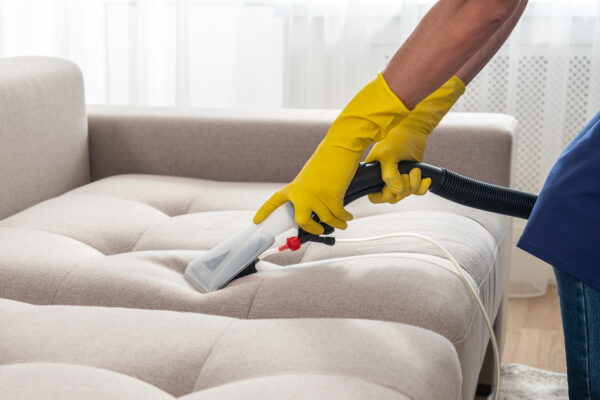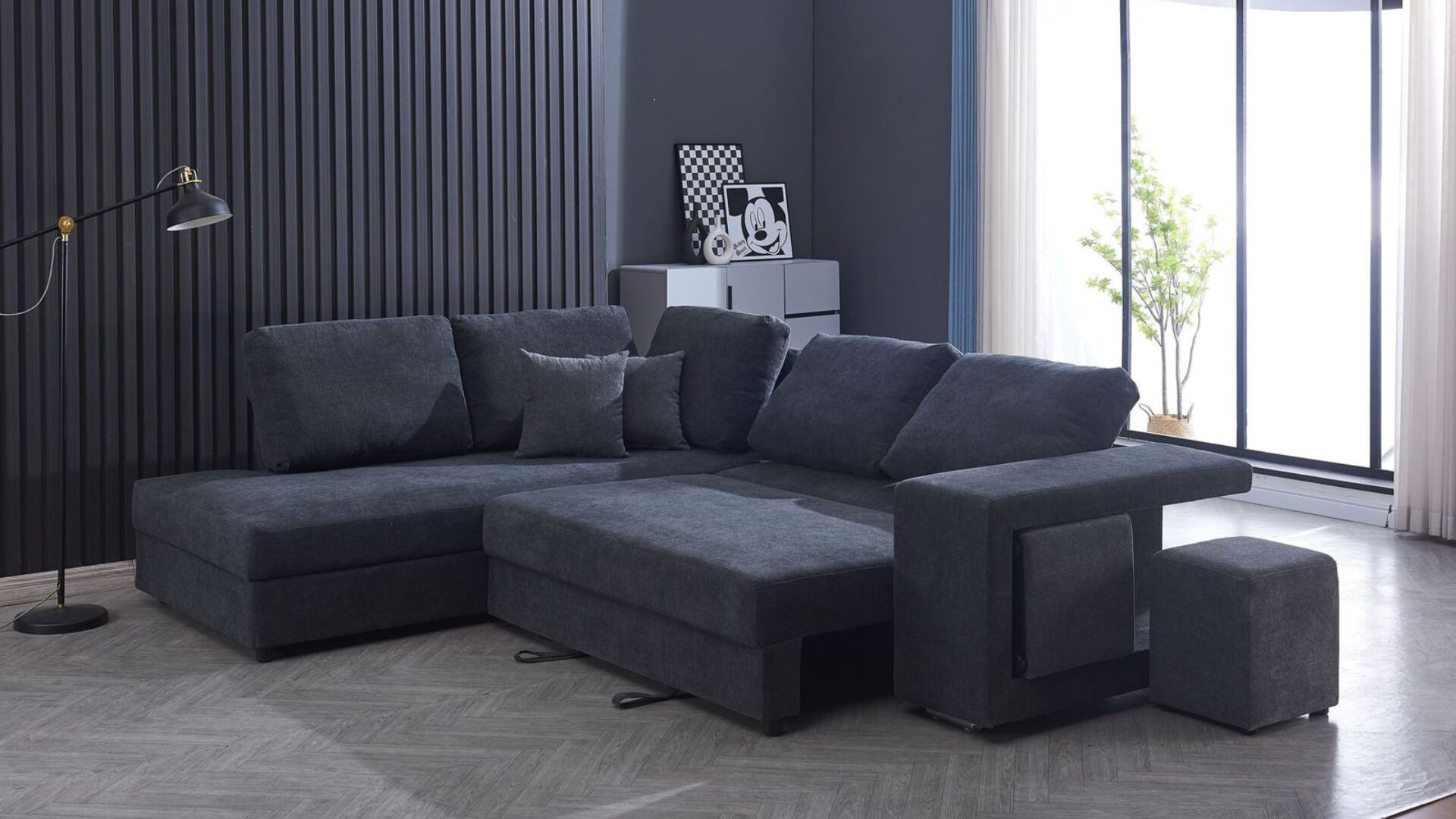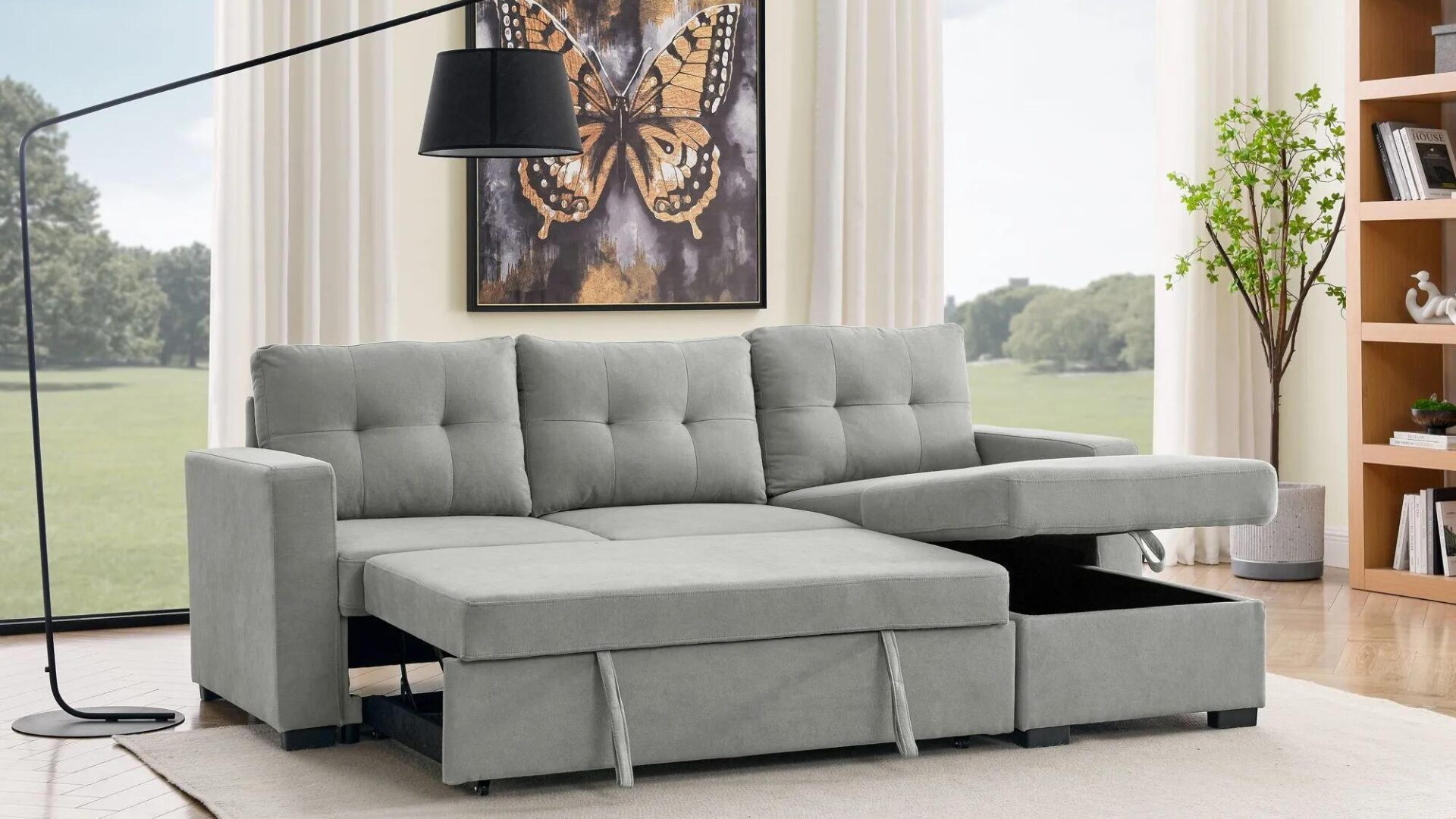Which Is the Best Material for Sofa -Leather, Fabric or Velvet?
Are you in the market for a new sofa but feeling overwhelmed by the array of materials available? Choosing between leather, fabric, and velvet can be a tough decision. After all, your sofa is not just a piece of furniture; it’s where you’ll spend countless hours lounging, relaxing, and entertaining. The material you choose can significantly impact not only the look but also the feel and durability of your sofa. In this comprehensive guide, we’ll inform you about different sofa materials, exploring the unique characteristics of leather, fabric, and velvet, so you can confidently select the perfect option for your home. So, let’s get started!
Different Types of Leather
Leather is a popular choice for sofas due to its timeless appeal and durability. However, not all leather is created equal. There are various types, each with its own characteristics and quality. Let’s explore four common types of leather used in sofas:
Full Grain Leather
Full grain leather is the highest quality and most luxurious option. It’s made from the top layer of the hide, retaining the natural grain and imperfections, which add to its unique charm. This type of leather develops a rich patina over time, enhancing its beauty and durability.
Top Grain Leather
Top grain leather is also derived from the top layer of the hide but undergoes sanding or buffing to remove imperfections. While it’s slightly less natural-looking than full grain leather, it still offers durability and a soft, supple feel.
Bonded Leather
Bonded leather is made from leftover leather scraps bonded together with polyurethane or latex. While it’s more affordable than genuine leather, it tends to be less durable and lacks the luxurious feel of higher-quality options.
Faux Leather
Faux leather, also known as synthetic leather or leatherette, is made from synthetic materials like polyurethane or vinyl. It mimics the look and feel of genuine leather at a fraction of the cost. While it’s more affordable and easier to maintain, it may lack the durability and natural aging process of real leather.

Advantages and Disadvantages of Leather
Advantages of Leather |
Disadvantages of Leather |
| 1. Luxurious Appearance: Leather sofas add a touch of elegance to any space, exuding a luxurious vibe. | 1. High Cost: Genuine leather sofas tend to be more expensive compared to fabric or faux leather options. |
| 2. Durability: Leather is exceptionally durable and can withstand years of use without showing significant wear and tear. | 2. Maintenance: Leather requires regular upkeep, including conditioning and cleaning, to maintain its quality and appearance. |
| 3. Timeless Appeal: Leather furniture never goes out of style, making it a timeless investment for your home. | 3. Susceptible to Damage: While durable, leather can be prone to scratches, cuts, and stains if not properly cared for. |
| 4. Comfortable Feel: Leather sofas offer a comfortable seating experience, molding to your body’s contours over time. | 4. Temperature Sensitivity: Leather can feel cold in the winter and hot in the summer, depending on the room’s temperature. |
| 5. Hypoallergenic: Leather is resistant to dust mites, pet dander, and other allergens, making it a suitable choice for allergy sufferers. | 5. Limited Color Options: Compared to fabric, leather sofas often come in fewer color choices, limiting design flexibility. |
Different Types of Fabric
Fabric sofas offer a wide range of options in terms of texture, color, and pattern, making them a versatile choice for any home. Let’s explore some common types of fabric used in sofas:
Cotton
Cotton fabric is soft, breathable, and easy to clean, making it a popular choice for sofas. It comes in various textures, from smooth to textured weaves, and is available in a wide range of colors and patterns. While cotton is generally durable, it may wrinkle and fade over time with frequent use and exposure to sunlight.
Linen
Linen fabric is known for its natural, relaxed look and feel. It’s highly breathable and absorbs moisture, making it ideal for hot and humid climates. Linen sofas often have a casual elegance and can come in a range of colors, although they may wrinkle easily and require more frequent cleaning to maintain their appearance.
Polyester
Polyester fabric is durable, wrinkle-resistant, and easy to clean, making it a practical choice for busy households. It’s available in a wide array of colors and patterns, and it’s often blended with other materials like cotton or linen for added durability and texture. However, polyester can feel less luxurious than natural fibers and may pill over time with heavy use.

Velvet
Velvet fabric is luxurious, soft, and adds a touch of glamour to any space. It has a rich texture and a subtle sheen that catches the light beautifully. While velvet sofas are undeniably stylish, they may require more maintenance to keep them looking their best, as velvet can attract dust and pet hair. Additionally, velvet may show imprints and shading over time, adding to its unique character.
Advantages and Disadvantages of Fabric
Advantages of Fabric |
Disadvantages of Fabric |
| 1. Variety of Options: Fabric sofas come in a wide range of colors, patterns, and textures, allowing you to choose one that suits your style and preferences. | 1. Susceptible to Stains: Fabric sofas are more prone to stains and spills compared to leather, requiring regular cleaning and maintenance to keep them looking fresh. |
| 2. Comfortable Feel: Fabric sofas offer a cozy and inviting seating experience, with softer cushions and a warmer touch than leather. | 2. Wear and Tear: Fabric sofas may show signs of wear and tear more quickly than leather, especially in high-traffic areas, leading to a shorter lifespan. |
| 3. Affordable Options: Fabric sofas are often more budget-friendly than their leather counterparts, making them a great choice for those on a tighter budget. | 3. Fading: Fabric sofas may fade over time with prolonged exposure to sunlight, affecting the overall appearance of the piece. |
| 4. Versatility: Fabric sofas can easily be reupholstered or updated with new slipcovers, allowing you to change the look of your furniture without purchasing a new sofa. | 4. Allergen Accumulation: Fabric upholstery can trap allergens such as dust mites, pet dander, and pollen, potentially triggering allergies in sensitive individuals. |
| 5. Cozy and Inviting: Fabric sofas have a softer, warmer feel compared to leather, making them a cozy spot to curl up and relax. | 5. Pet-Friendly Challenges: Fabric sofas may be more prone to scratches and damage from pets’ claws, requiring extra care and maintenance to keep them in good condition. |
Also Read: Velvet vs Fabric: What’s the Difference?
Durability and Longevity
Leather sofas are renowned for their exceptional durability and long-lasting nature. This robust material can withstand years of use with minimal wear and tear, making it a popular choice for those seeking a sofa that will stand the test of time. The natural resilience of leather allows it to maintain its shape and appearance, even with regular use. In contrast, fabric sofas can also be quite durable, but their lifespan often depends on the quality of the material and the level of care they receive. Regular maintenance, such as vacuuming and spot cleaning, can help extend the lifespan of fabric sofas. Velvet sofas, on the other hand, are generally less durable than leather or high-quality fabrics, but they can still provide a good lifespan if properly cared for. The delicate nature of velvet requires more attention and specialized cleaning methods to preserve its luxurious appearance.
Comfort and Softness
Leather sofas are often praised for their luxurious and comfortable feel, providing a smooth and supple seating experience that can be both inviting and sophisticated. The natural properties of leather allow it to conform to the body, creating a sense of relaxation and support. Fabric sofas, on the other hand, can offer a wide range of comfort levels, from plush and cozy to firm and supportive, depending on the specific material used. The texture and weave of the fabric can significantly impact the overall comfort and softness of the sofa. Velvet sofas, however, are renowned for their exceptionally soft and inviting texture, creating a cozy and enveloping seating experience that can be truly indulgent. The velvety pile of the fabric provides a sense of luxury and comfort that is unmatched by other materials.
Cleaning and Maintenance
Leather sofas are relatively easy to clean and maintain, often only requiring a simple wipe-down with a damp cloth and a leather conditioner to keep them looking their best. The smooth surface of leather makes it resistant to stains and spills, making it a low-maintenance option for busy households. Fabric sofas, on the other hand, can be more challenging to clean, as they may require regular vacuuming, spot cleaning, and even professional upholstery cleaning to keep them in pristine condition. The porous nature of fabric can make it more susceptible to absorbing dirt, oils, and other contaminants. Velvet sofas, being delicate, may require specialized cleaning methods to avoid damaging the fabric, such as gentle brushing or professional cleaning. The nap of the velvet can be easily disrupted, so extra care must be taken when maintaining these types of sofas.

Which Is the Best Material for Sofa?
When it comes to selecting the perfect sofa material, it’s essential to consider your lifestyle, budget, and personal preferences. First you should evaluate the pros and cons of each material in terms of durability, comfort, maintenance, and aesthetic appeal to make an informed decision. For those seeking a long-lasting and sophisticated option, leather may be the ideal choice. Fabric sofas offer a versatile and adaptable solution for those who enjoy experimenting with different design schemes. Velvet sofas, on the other hand, can provide a luxurious and indulgent seating experience for those who value the exceptional softness and texture. Ultimately, the choice of sofa material should be a reflection of your individual style and the desired ambiance you wish to create in your living space.
If you want quality sofas in Australia that suits your preference, contact Easy Home Furniture. Visit our website today and order yours to transform your living space with comfort and style!
FAQs
What are the advantages of leather sofas?
Leather sofas are durable, easy to clean, and have a classic look that never goes out of style. They also tend to be more resistant to stains and spills than fabric or velvet sofas.
What are the disadvantages of leather sofas?
Leather sofas can be expensive, and they may not be as comfortable as fabric or velvet sofas. They can also be prone to scratches and may require special care to maintain their appearance.
What are the advantages of fabric sofas?
Fabric sofas come in a wide variety of colors and patterns, making it easy to find one that matches your decor. They are also generally more comfortable than leather or velvet sofas and tend to be less expensive.
What are the disadvantages of fabric sofas?
Fabric sofas can be more difficult to clean than leather or velvet sofas, and they may not be as durable. They can also be more prone to stains and fading over time.


Leave A Comment
You must be logged in to post a comment.